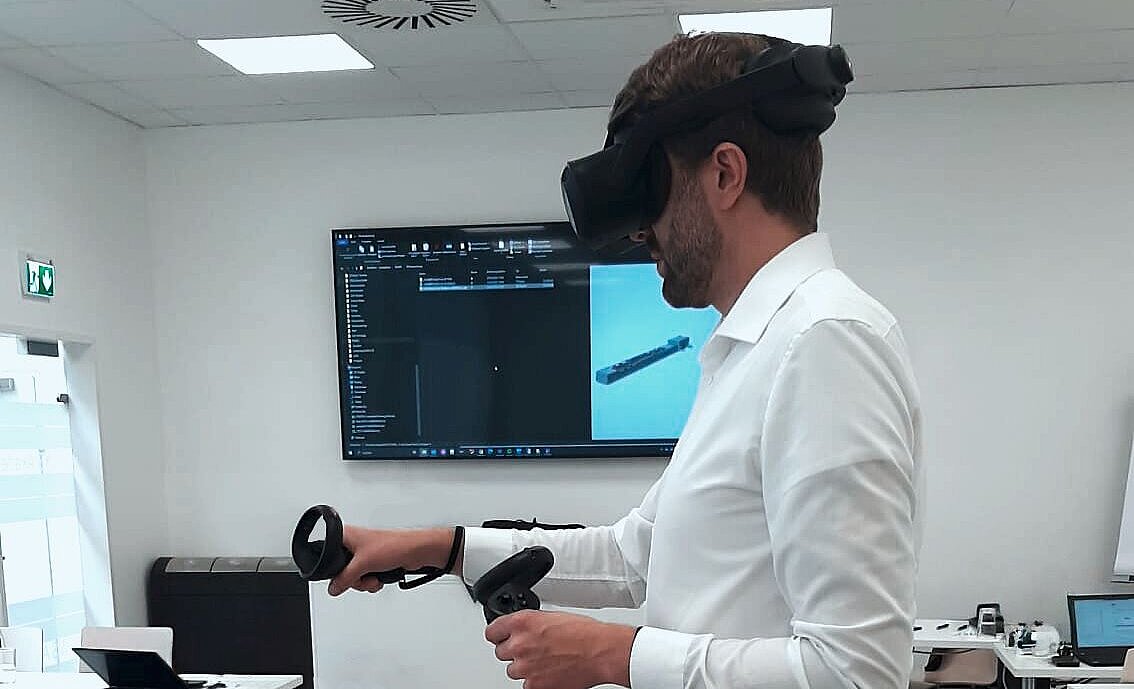We are constantly facing new challenges in the training field. Training courses have to become more flexible, location-independent, digital, exciting, and educational. For this, there are constant developments in the field of learning technologies. But are these new and developed technologies actually able to support the training? This is exactly what we analyzed together with the Vienna University of Technology and the Upper Austria University of Applied Sciences, with a focus on virtual reality (VR).
With VR technology, you enter a "world" that is completely cut off from the outside. In our case, we can place 3D products that represent our learning objectives in a virtual training world. This technology can give both advantages and disadvantages in the training field. Therefore, it is critical to determine which types of training can benefit from VR. For this purpose, we had two experienced trainers at our side, who gave us their valuable feedback on VR technology in the training sector. In addition, the Vienna University of Technology conducted an interview with our trainers, which will subsequently be analyzed, compared with interviews from other industries and evaluated.
After the evaluation was completed and prior to the final analysis of TU Wien, it can be stated that VR can definitely find a justified use in the training area. However, VR training cannot replace "hands-on" practical training. In order to achieve the best learning results, the strengths of the various training methods must be considered and, if possible, even combined. For example, a VR can help to integrate products into training without having to have them physically on site. This gives the training participant a much better understanding of the products than if only pictures of them are shown. When it comes to performing exercises directly on the product, a physical training object is usually required.
If the goal is to become familiar with specific products and understand the differences between them, VR can be used solely. However, it should be noted, that the respective trainer must have advanced knowledge of VR technology in order to be able to carry out any VR training smoothly.
